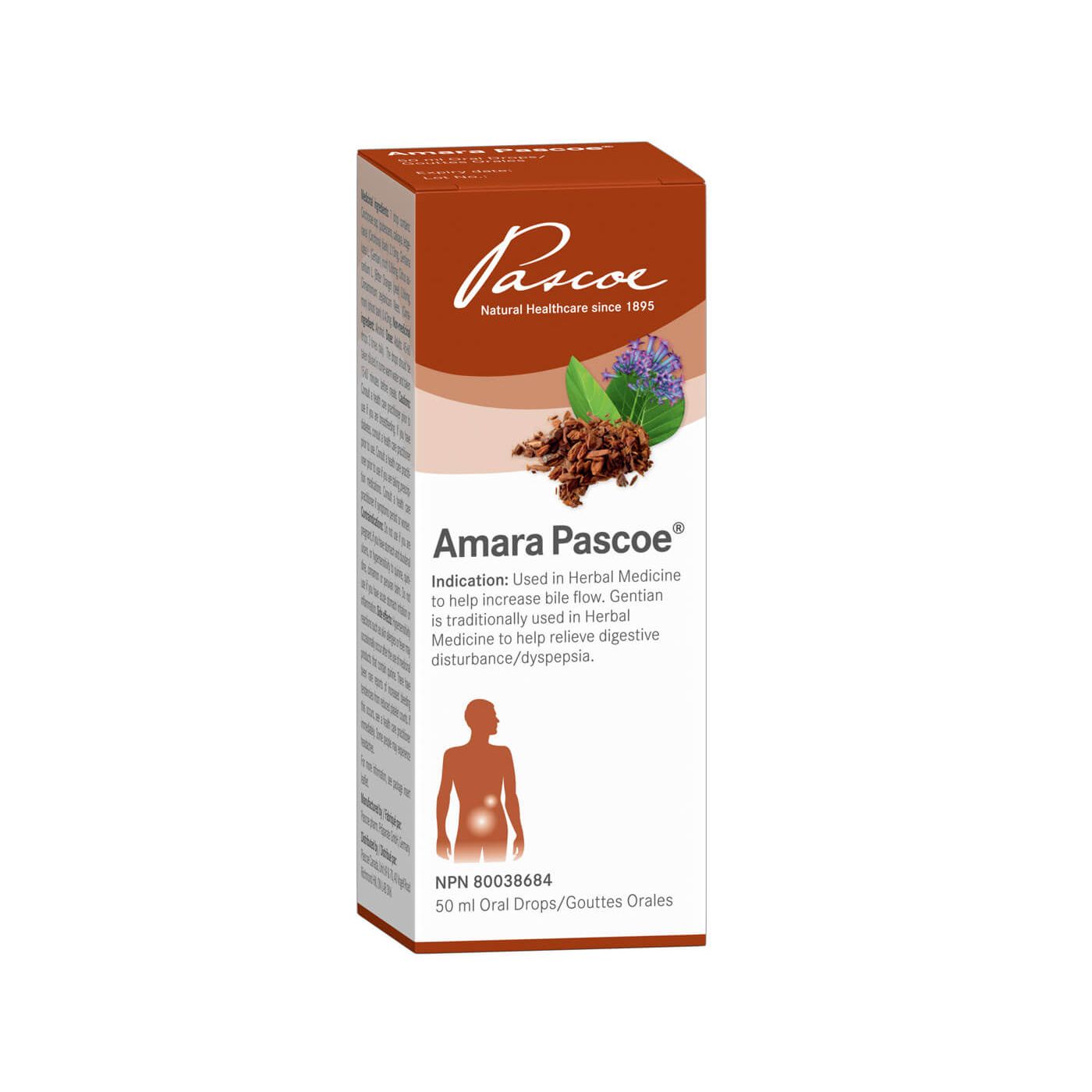Your Guide to Digestive Bitters
If you are new to the world of digestive bitters, as the name implies, bitters are products formulated from bitter ingredients.
The ingredients may be aromatics and botanicals and can include any fusion of herbs, flowers, bark, roots, fruit or seeds. Common botanicals with a natural bitter flavor include: cassia, orange peel, cinchona bark, gentian and cascarilla among others. Bitter formulas have been a part of almost every culture, from Ayurveda to Chinese medicine, the classic preparations have evolved over the years to become cultural staples. Digestive bitters continue to be supported by science with proven results for improving digestive health, boosting the immune system, easing stress and curbing sugar cravings.
Our bodies were built for bitters but with the rise of industrial agriculture, the modern manufactured diet is based upon mostly pleasant flavors: sweet, salty and processed food. The lack of bitterness in our regular diet is having unprecedented effects on our digestive system. Our digestive system is missing out on the benefits of the essential nutrients found in herbs and dietary diversity. The result is making us sick. Common digestive system ailments on the rise includes Celiac disease which is a serious sensitivity to gluten and requires a gluten-free diet. There is also an increase in digestive complaints including irritable bowel syndrome, ulcerative colitis, which is inflammation of the digestive tract, specifically the large intestines and gallstones. Gallstones are dense, hard deposits that form in the gallbladder. The gallbladder is a pear-shaped sac-like organ. Gallstones are formed when there is an excessive amount of cholesterol or waste products in your bile, or if the gall bladder does not empty properly. They block the ducks leading from your gallbladder to your intestines.


The Science of Digestive Bitters
The digestive system, also know as the alimentary canal, is made up of the gastrointestinal tract (GI tract) and accessory organs. The accessory organs include the liver, gallbladder and pancreas. The alimentary canal is a series of hollow organs and muscular tubes that stretch from the mouth to the anus. The hollow organs in the alimentary canal include the mouth, esophagus, stomach, small intestine and large intestine, and anus. The small intestine is comprised of three parts: the duodenum, the jejunum and the ileum. Some of our chemical digestion occurs in the small intestine. The large intestine has four parts: the appendix, cecum, colon and rectum. The rectum is part of the digestive tract where stool is held before it passes out of the body through the anus. An optimal functioning digestive system is necessary for breaking protein down into amino acids, fats into fatty acids and glycerol, and carbs into simple sugars.
The digestive system begins with consuming food in your mouth. Contents are transferred from the oral cavity through the pharynx. The pharynx is a part of the throat above the esophagus. In your esophagus, peristalsis occurs as a ringlike muscle relaxes to allow food to pass into your stomach. This ring, called the epiglottis, also prevents food from flowing back into your esophagus. Digestive juices in the stomach and pancreas, including gastric juice (HCI), digestive enzymes, and bile salts begin to secrete. Once the food is broken down, chyme empties into the duodenum, a part of the small intestines. Chyme consists of gastric acid and partially digested food. Once in the small intestine, nutrients are absorbed and digested into the bloodstream. As peristalsis occurs, digestion continues where waste products move from the small intestine to the large intestine.
Ever notice when you consume a bitter food you're salivary glands secrete extra saliva? One of the seven basic taste receptors that the tongue is sensitive to and detects is bitter. Our digestion is loaded with receptors (T2Rs) for bitter compounds. These can be found not only in our mouth and tongue, but also our stomach, liver, pancreas and gut. When the T2Rs are stimulated in the digestive tract, a nerve signal triggers a reflex in our autonomic nervous system to perceive the bitterness. The vagus nerve relays the bitter sensation to our stomach, liver, salivary glands and pancreas and supports digestion.


When our digestion is activated by bitters, our small intestines and large intestines breakdown food efficiently, absorb nutrients better in the GI tract, detoxify the liver and normalize stress levels - by virtue of the gut-brain connection. Arguably, bitterness is more than just a flavor, our bodies are intricately entwined by bitter substances and the healing power of plants.
Health Benefits of Digestive Bitters
Improve Your Digestion
Healthy digestion is the root of all health. Historically, digestive bitters have been used to alleviate digestive system disturbances, such as indigestion, nausea, heartburn, cramping, bloating or gas. Bitters do not directly "heal" the digestive system but trigger the secretion of stomach acid and act as a digestive aid. Being mindful of the gut-brain connection, stress is a major contributing factor to a weak human digestive system. High stress shunts blood flow and reduces digestive juices in our digestive system. In combination with a poor diet and age, our digestive juices can become depleted and result in stomach acid deficiency and digestive ailments. Use a digestive bitter to support the production of hydrochloric acid, pancreatic enzymes and bile in your intestines and regulate normal bowel habits.
Recommended digestive bitters: gentian, globe artichoke (cynara scolymus), dandelion, wormwood, burdoch, angelica root
Immune and Inflammation
Beyond the beneficial effects on digestion and digestive complaints, a reason as to why we have T2Rs in our respiratory system is to track the bacteria in our tissues and initiate an immune response if pathogenic species are detected. Research has discovered that sweetness suppresses the immune response. It has also revealed that bitter plants such as angelica or dandelion are bacterial quorum-sensing molecules and can initiate T2R activation. Antibacterial compounds inside epithelial cells are then released as part of an immune response.
In addition, bitter-tasting compounds have also been noted to have powerful anti-inflammatory, antispasmodic and antioxidant action. Low concentrations of bitters can cause contraction of smooth muscle tension whereas higher concentrations can lead to relaxation.
Recommend digestive bitters: oregon grape, barberry, angelic, chamomile


Curb Appetite and Sugar Cravings
In today's society we are bombarded by the marketing of snacks, sugar and carbs. We are also hard-wired to crave sweet foods. Bitters are your ally in your quest to attain a healthy, normal stomachic and digestion. Bitter foods stimulate the production of hormones in your digestive organs that control and suppress appetite and help us to feel full and satisfied. Bitter flavors can also curb the brain receptors that make us crave sugar and sweets.
Recommended bitters: artichoke leaf, licorice root, citrus peel, gentian root
Support Your Liver
The primary function of the liver is to effectively eliminate toxins from the body and regulate metabolic processes. Digestive bitters offer support by helping to eliminate toxins, releasing hormones to stimulate gullbladder contraction and aiding the metabolism of fats and sugars. Bitters work by sending a reflex signal through the vagus nerve which awakens your liver and ensures bile synthesis, antioxidant production and metabolism.
Recommended bitters: artichoke leaf, dandelion root, chicory root, silymarin.
Discover the Power of Bitters
Traditionally, the medicinal use of bitters calls for ingesting herbals in the form of tinctures (alcohol-based), tonics, teas or non-alcoholic chewing herbs to help prevent or reduce digestive system maladies like upset stomach, bloating, heartburn, indigestion or gas. Studies have shown, it is recommended to consume digestive bitters 30 minutes prior to a meal to improve appetite control or anytime you experience digestive system discomfort on-the-go. The important thing to remember with most healing herbals is that their greatest benefits are realized when they are consumed on a regular basis for a prolonged period of time. Timing of consumption is less important than regularity. Like most herbal remedies, dosing your tincture or own bitter is highly individualistic. How we respond to even a few drops of a bitter taste or bitter herbs varies among the population and trial and error will help you determine your best personal response.
Popular bitters to improve digestive function include Canadian Bitters, Urban Moonshine, Digestif and Amara Pascoe®. Amara Pascoe® is a herbal remedy to help increase bile flow. The active ingredient gentian is traditionaly used to help relieve digestive disturbances or dyspepsia. Amara is made with the following active ingredients: cinchona, gentian, bitter orange and cinnamon. The non-medicinal ingredient is the extractant ethanol. Amara helps with loss of appetite, bloating, and sluggish digestion.


